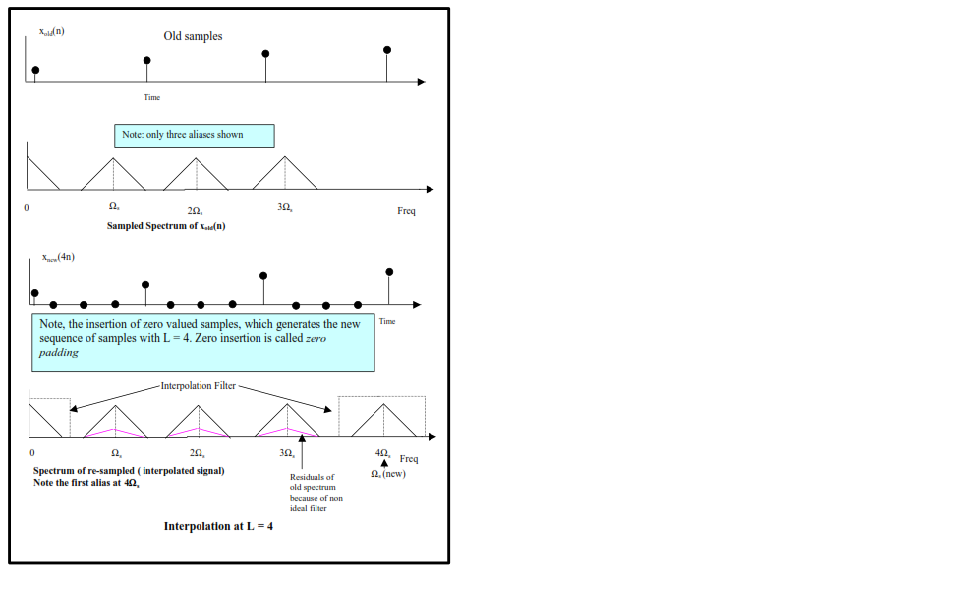Interpolation in digital signal processing is a very interesting and useful technique. The fundamental idea is to change the sampling rate of a digital signal. The tedious way is to convert a digitally sampled signal into an analog signal using a digital to analog converter and then re-sample at a higher rate — i.e interpolation. A more elegant way is to actual perform interpolation directly on the digital signal. The graphical illustration of this is shown below.In this graphic the interpolation factor is 4. i.e the increase in sampling rate is 4X over the old sampling rate. The picture shows the zero insertion method of interpolation. As can be seen ( upon magnification of the picture ( click twice on it). a interpolation filter is also an integral part of the process. Also an input anti-aliasing filter helps by limiting the signal bandwidth. This is usually an analog filter. For more details on multirate sampling please visit our website at http://www,signalpro.biz and click on the free reports link and check out the multirate sampling report.
Analog, RF/Wireless ASIC and module design, development and manufacturing
Design, develop, manufacture and deliver great analog and RF/Wireless Integrated Circuits and modules.


